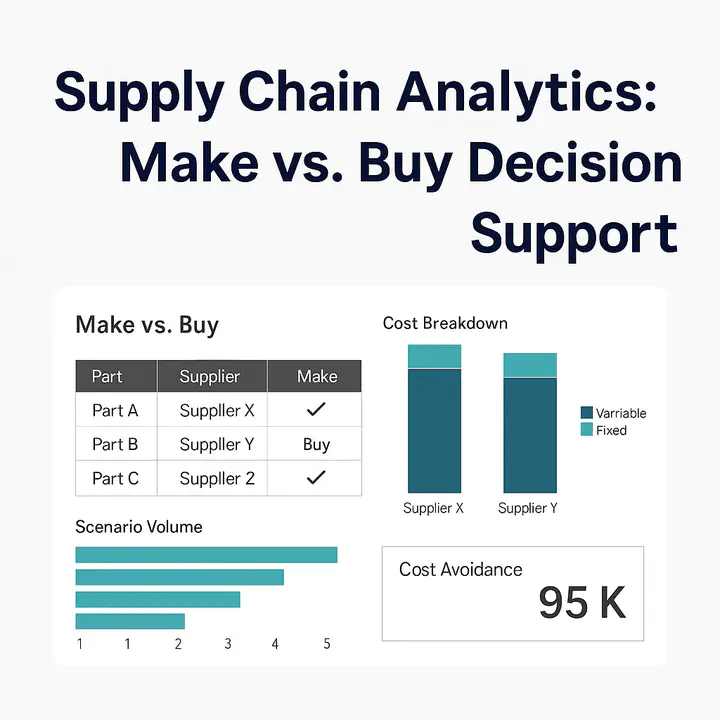Supply Chain Analytics: Make vs. Buy Decision Support

Supply Chain Analytics: Make vs. Buy Decision Support
One of the toughest questions in supply chain is:
Should we manufacture a part ourselves, or buy it from a supplier?
This project uses Power BI to turn that complex decision into a clear, interactive dashboard that supply chain teams and executives can use in real time.
What I Did
Imported and cleaned supplier quotes, internal cost estimates, and production data.
Built a data model linking suppliers, parts, and cost structures.
Designed interactive scenario sliders so teams can test different production volumes.
Created a Make vs. Buy calculator that compares both options side by side.
Added dynamic cost calculations to reflect extended and full costs (including overhead and capital).
What I Found
Low volumes → cheaper to buy from suppliers.
High volumes → cheaper to make in-house.
Results change based on cost assumptions, showing the value of scenario testing.
Leaders could now adjust assumptions live in meetings instead of waiting for manual spreadsheet updates.
Why It Matters for Business
This project shows how data can simplify a million-dollar supply chain decision:
Cut costs → by quickly identifying the most economical option.
Increase agility → leadership can test different “what-if” scenarios in seconds.
Improve decisions → moving beyond static spreadsheets to real-time interactive analysis.
Bottom Line
The Make vs. Buy Power BI dashboard acts as a decision-support tool for supply chain strategy. It helps businesses:
Reduce unnecessary spending
Reallocate resources smarter
Speed up strategic decisions